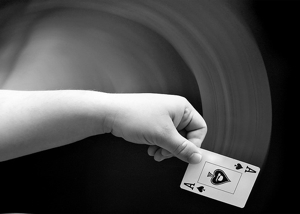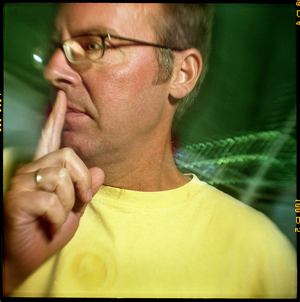SLOW SYNC FLASH / REAR SYNC FLASH
One camera function that can be a lot of fun to play with (and that can get you some interesting results) is slow sync flash.
Low Light Photography Options
When shooting with a subject in low light situations you generally have two options; either to shoot with a flash or to shoot with a slow shutter speed.
1. Flash - When shooting in low light with a flash in auto mode your camera will choose a relatively fast shutter speed. This means that your subject will be well lit and that if it is moving it will be frozen and as a result will be sharp. The problem with this is that it can also leave your subject lit up too brightly and can leave it’s background looking very dark as there is not enough time for the camera to collect any ambient light.
2. Slow Shutter Speed - The other option is to turn your flash off and shoot with a longer shutter speed in order to collect enough available light from the image to get a well exposed shot. This can be an effective technique if you’re shooting landscape or environmental shots where everything is nice and still - however if you’re shooting a moving subject it means you’ll get motion blur which could ruin your shot.
Both of the above options are legitimate technique but both have their weaknesses. Another options to consider is slow sync flash.
What is Slow Sync Flash?
Slow Sync Flash is a function found on many cameras that tells your camera to shoot with both a longer shutter speed as well as firing the flash. This means you get the best of both worlds above and can both get a relatively sharp shot of your main subject as well as get some ambient light from the background and foreground.
Some cameras allow you to access slow sync flash manually and set exposure length and flash strength but on many compact cameras there is a little less control given and it’s presented as an automatic shooting mode, often called ‘night mode’ or even ‘party mode’ where the camera selects the slower shutter speed and flash strength for you.
Rear and Front Curtain Sync
If your camera gives you some manual control when it comes to slow sync flash you might find yourself presented with two options called ‘rear curtain sync’ and ‘front curtain sync’.
These two modes sound a little technical but to put it most simply they are the way in which you choose when to fire your flash during the longer exposure.
Rear Curtain Sync - this tells your camera to fire the flash at the end of the exposure. ie when you press the shutter your lens opens up and starts collecting light and just before it closes the flash will fire to light up and freeze your main subject (see the card shot to the left for an example where you’ll see the card trail ending in a nice crisp shot of the card).
Front Curtain Sync - this tells your camera to fire the flash at the start of the exposure. ie when you press the shutter, the flash will fire immediately and the shutter will remain open afterwards capturing ambient light.
You might not think there’s much difference between these modes but when you’re photographing a moving subject it can have a real impact. You’ll find many action/sports photographers will use Rear Curtain Sync when shooting with a panning technique.
Tripod or Handheld?
When using either slow synch in either mode (or in the automatic ‘night mode’ you will want to consider whether or not to use a tripod. Traditionally when shooting with longer shutter speeds it is accepted that a tripod is essential in order to stop any camera movement. Even the steadiest of hands will not be able to stop a camera moving over even a 1 or 2 second exposure. So if you want to eliminate blur from your cameras movement definitely use a tripod (and consider a shutter release cable).
However in some circumstances hand holding your camera while using slow sync flash can lead to some wonderful effects. For example if you’re at a wedding or party and are out on the dance floor the results can be great at capturing the mood of a night with those you’re photographing largely frozen by the flash but the lights on the dance floor blurred from you moving your camera during the shot.
Of course hand held techniques won’t work with every situation so experiment with both methods at different shutter speeds and by using both rear and front curtain sync and find the best methods for your particular situation.








